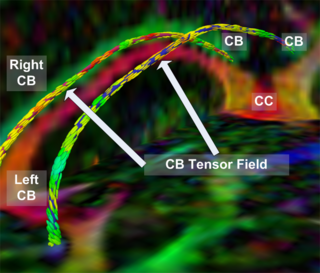Difference between revisions of "2008 Winter Project Week:microslicer 3"
| Line 26: | Line 26: | ||
<h1>Approach, Plan </h1> | <h1>Approach, Plan </h1> | ||
| − | Our approach is | + | Our approach is based upon using image tessellations and micro-structure characterization algorithms widely used in the material science community. These algorithms help us understand biological organization in terms of component packing densities, arrangements and spatial distributions. The algorithms are detailed in the references provided below. Our main purpose at the Project Week is to work with our collaborators in order to define the scope of this project, decide upon the details of the microSlicer framework in Slicer3, and implement our current developed code into the Slicer3 framework. |
</div> | </div> | ||
Revision as of 20:40, 19 December 2007
Home < 2008 Winter Project Week:microslicer 3 Return to 2008_Winter_Project_Week |
Key Investigators
- The Ohio State University: Kishore Mosaliganti, Raghu Machiraju
- Kitware: Brad Davis, Stephen Aylward
- Harvard: Steve Pieper
Objective
We have developed techniques for finding the optimal geodesic path (or anchor tract) between two regions of interest in DWMRI data.
The objectives of this project are to port the Fast Sweeping and optimal geodesic path tractography code to ITK as well as the code to provide for volumetric segmentation of DW-MRI data.
See our Project Page for more details.
Approach, Plan
Our approach is based upon using image tessellations and micro-structure characterization algorithms widely used in the material science community. These algorithms help us understand biological organization in terms of component packing densities, arrangements and spatial distributions. The algorithms are detailed in the references provided below. Our main purpose at the Project Week is to work with our collaborators in order to define the scope of this project, decide upon the details of the microSlicer framework in Slicer3, and implement our current developed code into the Slicer3 framework.
Progress
June 2007 Project Week
During this Project Week, we did a lot of algorithmic design work, focusing on leveraging optimal or geodesic path information to provide for volumetric segmentations of fiber bundles. Working with Marek Kubicki and the Harvard DBP, we were able to begin the process of applying our algorithm to the full cingulum bundle with new labelmaps and to a new fiber bundle - Arcuate. We have recently achieved significant results in volumetric segmentations using a locally-constrained region-based technique (see the images above).
Jan 2007 Project Half Week
We finished the itkDirectionalIterator which will be needed in the Fast Sweeping implementation. Furthermore, we made progress in porting our Matlab code to ITK.
References
- J. Melonakos, M. Niethammer, V. Mohan, M. Kubicki, J. Miller, A. Tannenbaum. Locally-Constrained Region-Based Methods for DW-MRI Segmentation. Submitted to MMBIA 2007.
- V. Mohan, J. Melonakos, M. Niethammer, M. Kubicki, and A. Tannenbaum. Finsler Level Set Segmentation for Imagery in Oriented Domains. BMVC 2007.
- J. Melonakos, V. Mohan, M. Niethammer, K. Smith, M. Kubicki, and A. Tannenbaum. Finsler Tractography for White Matter Connectivity Analysis of the Cingulum Bundle. MICCAI 2007.
- J. Melonakos, E. Pichon, S. Angenet, and A. Tannenbaum. Finsler Active Contours. IEEE Transactions on Pattern Analysis and Machine Intelligence, to appear in 2007.
- E. Pichon and A. Tannenbaum. Curve segmentation using directional information, relation to pattern detection. In IEEE International Conference on Image Processing (ICIP), volume 2, pages 794-797, 2005.
- E. Pichon, C-F Westin, and A. Tannenbaum. A Hamilton-Jacobi-Bellman approach to high angular resolution diffusion tractography. In International Conference on Medical Image Computing and Computer Assisted Intervention (MICCAI), pages 180-187, 2005.
